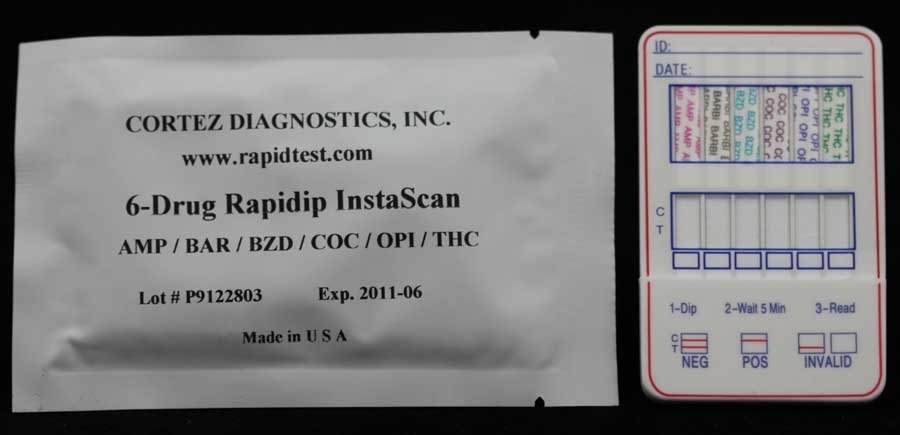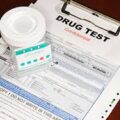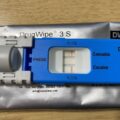Drug use can impair a person’s judgment and increase safety risks. This is especially true in certain industries, such as construction, in which using drugs or alcohol at work could cause an injury or even a fatality. As employee drug abuse causes as much as 50% of all on-the-job accidents (source), this is not a matter to be taken lightly. Plus, drug testing can improve the quality of life of employees and their families.
Panel tests employ paper strips impregnated with antibodies that react and change color in the presence of a drug or its metabolites—substances produced when a drug breaks down in the body. The panel tests, also known as immunoassays, detect drugs much the same way home pregnancy tests change color in the presence of pregnancy-related hormones.
Types of Drug Tests
Urine
Urine testing is the most popular type of test because it is simple, non-invasive, and highly accurate. A component of marijuana called THC can be detected in the urine. Anabolic steroids can also be detected through urine testing. The ability of the test to detect these substances depends on how much was used and for how long.
Urine drug testing is widely used for testing for opioids and illicit drugs. In the majority of situations, a screening test is used that utilizes an immunoassay, which detects the parent drug and/or metabolite. It usually tests for marijuana, cocaine, opiates, PCP, and amphetamines.
Typically, the screening immunoassay detects the amount of drug present in urine above a predetermined cutoff concentration. Thus, a substance may be present, but if the concentration of that drug is below the cutoff, the result will be negative. For more precise results, the confirmatory urine drug test is done by gas chromatography/mass spectrometry or high-performance liquid chromatography. This test is highly specific and is typically used when testing for the presence of a specific drug is needed.
Hair
Hair tests are less susceptible to adulteration than urine tests. Hair provides a semi-permanent record of drug use. Drugs circulating throughout the body cling to the hair as it grows. Therefore, if the drug was taken recently, it will be found in the hair near the scalp. If the drug was taken in the past, the drug will be found in hair that has grown out.
Typically, drugs cannot be washed out of the hair. This is in contrast to drugs in smoke, which stick to the hair and can be removed with shampoo. However, products used on the hair might, at times, interfere with test accuracy. Hair testing has an advantage because it can detect drug use over longer periods of time (usually around 90 days). This test is available for home use.
Sweat
To test sweat, a bandage-like patch is placed on the upper arm, midriff, or lower back to collect sweat. Contaminants from the environment cannot penetrate the adhesive barrier from the outside, so the patch can be worn during normal activities. To prevent tampering, the adhesive plastic film cannot be reapplied once removed.
Residue
Residue tests are typically found in home testing kits that allow parents to test their children. The kit comes with a pad that picks up drug residue by swiping the pad on the child’s belongings. The pad then is mailed to the manufacturer for testing. The major flaw with this test is that it cannot determine whether any drug residue found was left by the child under suspicion or by someone else.
Blood
Blood tests are the most accurate test but are not used routinely in the workplace or school.
Saliva
A saliva test is a way to detect if someone has been using drugs within the past few days. This type of test can detect many illegal substances, such as heroin and cocaine. But, it may be less reliable in detecting marijuana.
Breath
This involves exhaling into a hand-held machine tests for alcohol consumption. Devices are available for home use. There are also disposable devices.
What Does AMP Mean On A Drug Test?
Modern technology enables the detection of a vast range of substances. Employers in industries where abuse of specific substances is a concern (makers and sellers of pharmaceuticals or supplements, for instance) can order custom tests for virtually any substance. AMP on a drug test stands for Amphetamine a central nervous stimulant. Its use results in an increase in certain types of brain activity, resulting in a feeling of higher energy, focus, confidence, and in a dose-dependent manner, can elicit a rewarding euphoria. According to the Center for Substance Abuse Research, amphetamine was first synthesized in Germany in the late 1800s; however, its stimulant properties were not really discovered until about the 1930s, when it began to be used to treat nasal congestion.
Amphetamine abuse has become a major challenge facing people globally. Prescription stimulants like Adderall and Dexedrine, along with illicit amphetamines like methamphetamine and ecstasy, are highly addictive and disruptive when used as recreational drugs. Understanding more about these medications and drugs and how they work in the body creates an ability to recognize the signs of addiction, so individuals can learn how to get help in treating this challenging issue.
People who have been abusing amphetamines often wonder how long these drugs stay in their systems. If you’ve quit taking amphetamines or are considering discontinuing your use, it is important to consult with a doctor to determine the best process for giving up these drugs, as you may experience withdrawal. A doctor can recommend a tapering process or refer you to treatment to help you manage withdrawal.
Once people have completely discontinued using the amphetamines, they normally want to know how long it will take for the drugs to be removed from their systems. Naturally, the process of elimination from the body varies slightly from person to person.
Experts have provided guidelines regarding how long amphetamines stay in the urine, hair and blood. These guidelines are averages and can change from person to person. They are as follows:
- Urine: Up to 2-3 days
- Hair: Up to three months
- Blood: Up to 46 hours
The peak effects of amphetamines occur 1 to 3 hours after a person takes them by mouth, and effects last for as long as 7 to 12 hours. According to Johns Hopkins Medicine, the half-life for the popular amphetamine Adderall is 9 hours for the immediate-release version and 10-13 hours for its extended-release version.
Factors that Influence How Long Amphetamines Stay in Your System
Several factors play a role in how long amphetamines linger inside the body. The most influential factors to consider when coming off stimulants are:
- Age: Age plays a dynamic role in organ function as well as metabolism rates. The younger a person is, the faster their metabolism is usually going to be, and the better their normal organ functions will be. The older someone is, the less likely they are to have a fast and fully-functioning metabolism and organ function. Therefore, age is a huge factor in how quickly someone can eliminate toxins from his or her body.
- Body composition: We must look at height, weight, and fat content in comparison to the dosage amounts someone has been taking. If they have been taking amounts disproportionately to these factors, their elimination process will vary significantly from someone who is within average proportions.
- Genetics: Addiction is often a function of genetic makeup. Genetics also dictate a person’s body type and metabolism. A person’s body type and genetic makeup will affect how someone is able to process stimulants through their system.
- Function of the Kidney & Liver: A person with a dysfunctional liver or kidney is going to have a harder time eliminating toxins from amphetamines than someone with a healthy, fully-functioning liver and kidney. Those organs are essential for elimination and thus will affect clearance timeframes.
- Metabolism: While diet, supplements, and fitness can affect someone’s metabolic rates, the rule of thumb is that the higher a person’s metabolism, the faster they will be able to process and excrete drugs, food, and other liquids.
- Frequency of use: The frequency at which someone is using amphetamines and the amount they are using will greatly affect how quickly they will be removed from the system. If someone is a heavy user, they will take longer to rid their body of a drug than someone who only took a single dose one time. SEE: What Does PCP Stand For On A Drug Test?







